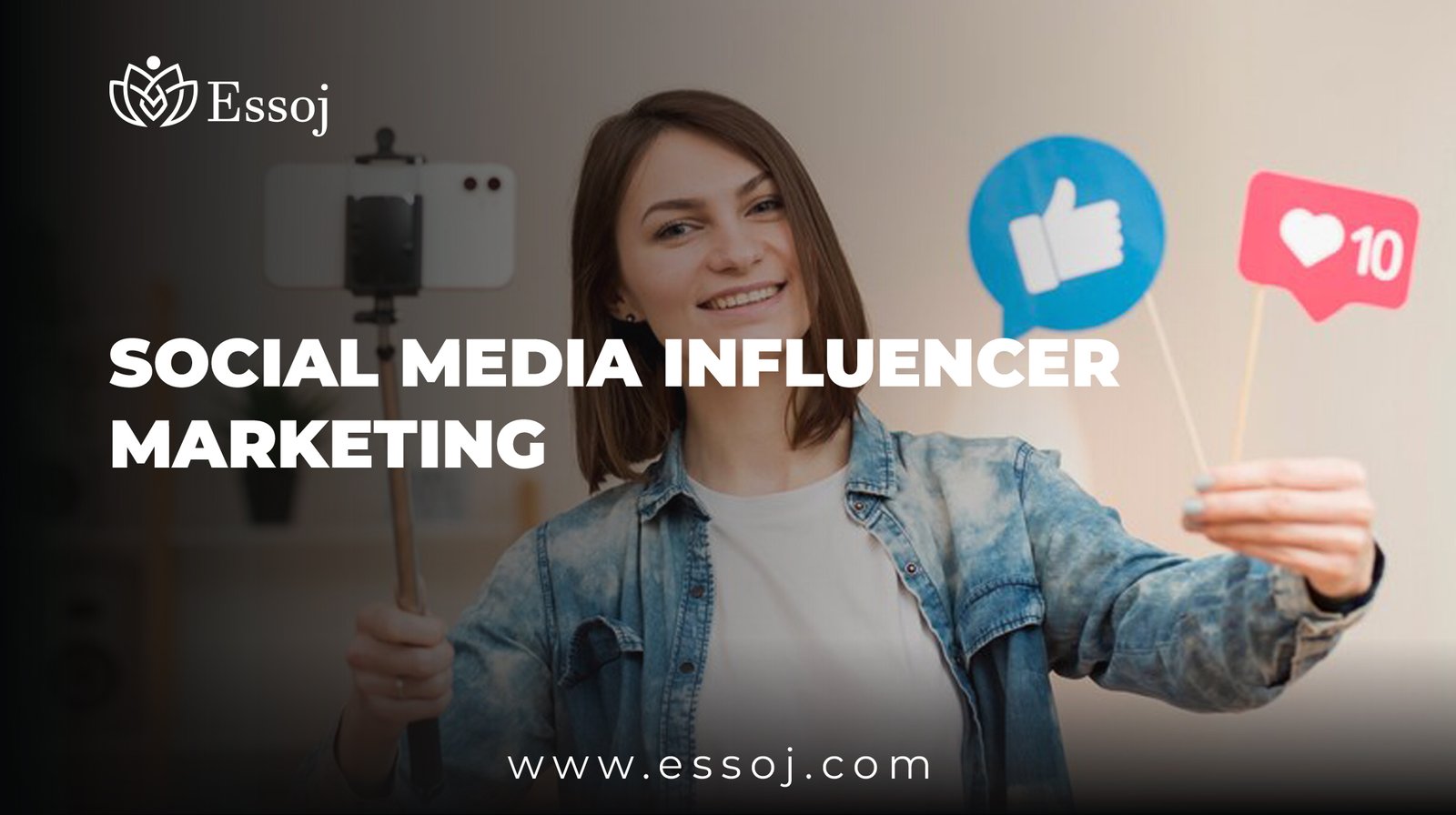In today’s digital age, Social Media Influencer Marketing has emerged as one of the most effective and authentic ways for brands to connect with their target audience. Unlike traditional advertising, which can often feel impersonal or intrusive, influencer marketing relies on individuals who have built trust and credibility within their communities. This personal connection makes influencer campaigns feel natural and relatable, leading to higher engagement and conversions.
This article provides a detailed exploration of Social Media Influencer Marketing, guiding you through its importance, types of influencers, best practices, and step-by-step strategies to create a successful campaign. Whether you are a small business owner or a marketing professional, this guide will equip you with the knowledge to harness the power of influencers for your brand.
What Is Social Media Influencer Marketing?
At its core, Social Media Influencer Marketing involves partnering with popular online personalities who can sway their followers’ opinions and behaviors. These influencers have cultivated loyal audiences on platforms like Instagram, YouTube, TikTok, Twitter, and Facebook, where they share content ranging from lifestyle and fashion to tech reviews and fitness tips.
The key to influencer marketing’s success lies in authenticity. Unlike traditional ads, influencer content feels like a recommendation from a trusted friend rather than a hard sell. For example, when a beauty influencer shares their favorite skincare product and genuinely explains why they love it, their followers are more likely to trust that endorsement and consider trying the product themselves.
Why Is Social Media Influencer Marketing So Effective?
The rise of Social Media Influencer Marketing coincides with the shift in consumer behavior toward peer recommendations and online communities. Research shows that more than 70% of consumers trust influencer opinions over brand advertisements. People no longer want to be sold to; they want to discover products through trusted voices.
Moreover, social media influencers are often experts or enthusiasts in specific niches, making their recommendations highly relevant to their followers. For example, a fitness influencer’s audience trusts their advice on workout gear and nutrition supplements, while a tech influencer’s followers rely on their reviews for the latest gadgets.
This personalized, niche targeting allows brands to reach highly engaged audiences, boosting the chances of converting followers into customers.
Types of Influencers and How to Choose the Right One
Understanding the different influencer types is essential when crafting your Social Media Influencer Marketing strategy. Here are the main categories:
Mega-Influencers
Mega-influencers typically have over a million followers and are often celebrities or public figures. They offer vast reach but come with higher costs and sometimes lower engagement rates due to their large, diverse audiences.
Macro-Influencers
These influencers have between 100,000 and 1 million followers. They balance reach and niche focus, often attracting followers interested in particular topics like fashion, travel, or gaming.
Micro-Influencers
With 10,000 to 100,000 followers, micro-influencers have smaller but highly engaged audiences. They are often seen as more relatable and trustworthy, making them ideal for authentic brand collaborations.
Nano-Influencers
Nano-influencers have fewer than 10,000 followers but maintain very close relationships with their audience. They excel at hyper-targeted marketing, often leading to high engagement rates despite their smaller followings.
Choosing the right influencer depends on your brand goals, budget, and target audience. For instance, smaller brands may find better ROI working with several micro- or nano-influencers, while larger companies might prefer macro or mega-influencers for broad awareness campaigns.
Step-by-Step Guide to Building Your Social Media Influencer Marketing Strategy
Creating an effective Social Media Influencer Marketing campaign requires planning and execution. Here is a step-by-step approach:
Step 1: Define Your Goals
Start by clearly defining what you want to achieve. Are you aiming to increase brand awareness, drive sales, launch a new product, or grow your social media following? Having specific, measurable objectives will guide your entire campaign.
Step 2: Identify Your Target Audience
Understand who your customers are—their age, interests, and preferred social media platforms. This helps in selecting influencers whose followers match your ideal customer profile.
Step 3: Find and Vet Influencers
Use influencer marketing platforms, manual research, or social listening tools to discover potential influencers. Look at their follower demographics, engagement rates, content quality, and previous partnerships to ensure alignment with your brand values.
Step 4: Reach Out and Build Relationships
Start by engaging with their content—like, comment, and share. Genuine interaction builds rapport before you propose a formal partnership. Personalized messages explaining why you admire their work and how a collaboration can benefit both parties increase your chances of success.
Step 5: Collaborate on Content Creation
Work closely with influencers to develop content that resonates naturally with their audience. This could be product reviews, tutorials, giveaways, or behind-the-scenes stories. Authenticity should remain your priority to maintain trust.
Step 6: Launch and Promote Your Campaign
Once content is ready, launch your campaign. Promote it across your brand’s channels and encourage influencers to share widely. Consider boosting posts with paid ads to increase reach.
Step 7: Measure and Analyze Results
Track key metrics such as engagement rates, website traffic, conversions, and sales attributed to the campaign. Use these insights to optimize future collaborations and improve ROI.
Real-Life Anecdote: How a Startup Leveraged Influencers to Boost Sales
A small skincare startup struggling to break through the noise decided to try Social Media Influencer Marketing with a few micro-influencers in the beauty space. Instead of targeting huge celebrities, they focused on individuals passionate about natural skincare and honest reviews.
One influencer created an unboxing video detailing their experience with the products, sharing before-and-after photos. The genuine tone struck a chord with their followers, who began trying the products and posting their own results. Within three months, the startup saw a 60% increase in sales and a loyal community forming around their brand.
This story shows how authenticity and targeted influencer partnerships can dramatically impact brand growth.
Common Challenges and How to Overcome Them
Even the best-planned Social Media Influencer Marketing campaigns can face hurdles. Here are common challenges and solutions:
- Fake Followers: Avoid influencers with inflated follower counts or low engagement. Tools like Social Blade can help verify authenticity.
- Misaligned Brand Messaging: Ensure clear communication about your brand values and campaign goals.
- Measuring Impact: Use UTM tracking, promo codes, and affiliate links to track conversions accurately.
- Platform Algorithm Changes: Stay updated with social media trends and adapt strategies accordingly.
Future Trends in Social Media Influencer Marketing
Looking ahead, Social Media Influencer Marketing continues to evolve:
- Rise of Short-Form Video: Platforms like TikTok and Instagram Reels dominate engagement, making video content a must-have.
- Growth of Micro and Nano Influencers: Brands increasingly prefer smaller influencers with niche audiences for authentic engagement.
- Focus on Long-Term Partnerships: Brands are shifting from one-off campaigns to ongoing collaborations to build trust.
- Increased Use of AI and Analytics: Advanced tools help brands identify the best influencers and measure campaign success more precisely.
Final Thought: Why Social Media Influencer Marketing Is Essential for Your Brand
In conclusion, Social Media Influencer Marketing offers unparalleled opportunities for brands to connect authentically with their audience. This essay has detailed the concept, types of influencers, strategic steps, and potential challenges in influencer marketing.
When executed thoughtfully, influencer marketing can build trust, increase brand awareness, and drive sales in ways traditional marketing cannot match. The key is focusing on genuine relationships, understanding your audience, and continuously measuring and adapting your strategy.
As the digital landscape changes, brands that master Social Media Influencer Marketing will enjoy a strong, loyal community and sustainable growth in today’s competitive market.

